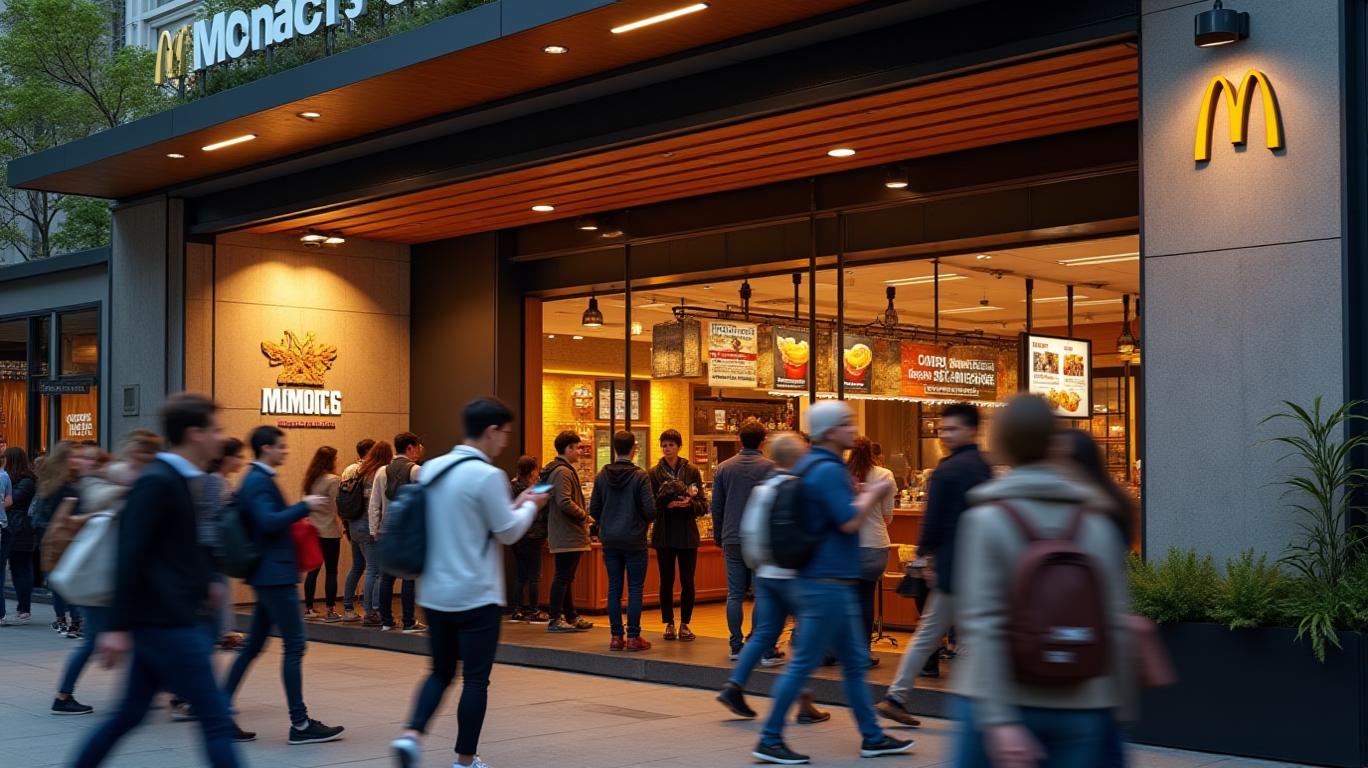McDonald’s Navigates Mixed Results with Strategic Reboots
The first quarter of 2025 brought both headwinds and opportunities for McDonald’s, as the fast-food giant reported a modest decline in global sales but unveiled a bold product comeback. While its U.S. operations faced customer count pressures, the company leaned into international growth and nostalgia-driven innovation—a strategy that could define its resilience in an uncertain economic climate.

A Global Sales Snapshot: Resilience Amid Contrasts
McDonald’s Q1 2025 results revealed a complex picture. Global comparable sales dipped 1.0%, though this was “effectively flat” when adjusting for Leap Day distortions. The U.S. market, its largest, suffered a 3.6% sales decline, driven by fewer guests—a stark contrast to the 3.5% growth in International Developmental Licensed Markets (IDL), where the Middle East and Japan outperformed.
The financials underscored operational challenges: consolidated revenues fell 3% to $6.3 billion, while operating income dropped 3% to $2.1 billion. Pre-tax restructuring charges of $66 million further clouded the picture. Yet, management framed these results as proof of enduring resilience. “We’ve navigated 70 years of change by staying agile,” said a spokesperson, pointing to loyalty programs that now drive over $31 billion in annual sales across 60 markets.
The McCrispy Reboot: A Nostalgic Gamble or Strategic Masterstroke?
Amid the sales slowdown, McDonald’s announced the permanent return of chicken strips—a product absent from menus since 2020—as the McCrispy Strips. Launched on May 5, the reimagined offering includes 100% white meat with a new crispy breading and a Creamy Chili Dip. The move reflects a calculated bet on nostalgia, with the CMO emphasizing that the “craveable” item responds to “overwhelming fan demand.”
The launch also signals a broader strategy to diversify its protein portfolio. Analysts note that chicken, particularly in value-oriented formats, could counterbalance declining burger sales in price-sensitive markets. The chain’s focus on “menu innovation” is further bolstered by plans to reintroduce Snack Wraps later this year, hinting at a renewed emphasis on small-format, shareable items to drive foot traffic.
The Franchisee-Fueled Future
Underpinning McDonald’s model is its franchisee ecosystem, which accounts for roughly 93% of its restaurants. Systemwide sales—$8 billion in Q1—remain tied to franchisee performance, with management stressing the importance of supporting operators through economic volatility. The company’s loyalty programs, which now boast over 40 million U.S. members, are another pillar of retention.
Yet challenges linger. Currency fluctuations and tariffs continue to pressure margins, particularly in Europe, where weak U.K. sales dragged international operated markets down 1.0%. “The U.K. is a canary in the coalmine for broader European demand,” noted Bernstein analyst Alexia Howard, who downgraded MCD shares in April.
Conclusion: A Recipe for Recovery or a Risky Reliance on Nostalgia?
McDonald’s Q1 results reveal a company at a crossroads. While its global diversification—bolstered by IDL market growth—buffers regional weaknesses, its U.S. struggles and margin pressures demand innovation beyond mere product reboots. The McCrispy launch, however, offers a microcosm of its path forward: leveraging nostalgia as a low-risk, high-reward lever to reignite interest.
Key metrics suggest cautious optimism. Despite Q1’s 2% EPS decline, non-GAAP EPS held steady at $2.67, and systemwide sales remain robust in loyalty-driven markets. If the chain can sustain its franchisee partnerships and execute on its chicken-focused strategy, it may yet turn the corner. As management puts it: “Innovation and agility are baked into our DNA.” For investors, the question is whether this DNA can override the gravitational pull of a slowing consumer landscape—or if McDonald’s is merely serving up a temporary fix.





















